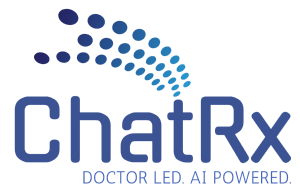When I founded ChatRx after 30 years in clinical practice, a handful of colleagues wondered if I was abandoning medicine for business.
The truth? I’m solving a fundamental healthcare equation that’s eluded us for decades: how to deliver quality care that’s simultaneously accessible, affordable, and financially sustainable.
As both a physician and healthcare entrepreneur, I’ve seen firsthand how our traditional healthcare models are straining under increasing pressure. The good news is that AI-powered healthcare isn’t just a technological advancement—it represents a profound business transformation that could help solve some of medicine’s most persistent economic challenges
The Economic Problem in Healthcare Today
Let’s start with some uncomfortable truths about our current healthcare system:
Unsustainable Cost Structures
The average cost to deliver care continues to rise. Operating a medical practice can take as much as $200,000 in overhead costs per physician annually before a single patient is seen. These economics force doctors to maximize patient volume and minimize time spent with each patient.
The Physician Shortage Crisis
According to the Association of American Medical Colleges, we’re facing a potential projected shortage of up to 124,000 physicians by 2034. This shortage is particularly acute in primary care and rural areas, creating “healthcare deserts” where patients have limited or no access to physicians.
Emergency Department Overutilization
Emergency departments have become the default option for many patients, even for conditions that could be treated in other settings. The average ER visit costs over $1,200 and takes 4+ hours—a tremendous misallocation of resources when roughly 30% of these visits are for non-emergency conditions.
The Insurance Complexity Tax
Medical practices typically employ 1-2 full-time staff members just to handle insurance paperwork and billing. This administrative burden adds approximately 15-25% to the cost of healthcare delivery without improving actual patient care.
These aren’t just clinical or social problems—they’re fundamental business model challenges that traditional healthcare has struggled to solve.
How AI Transforms Healthcare Economics
AI-powered healthcare platforms like ChatRx aren’t simply adding technology to existing systems—they’re reimagining the business of healthcare delivery from the ground up.
Scalability of Physician Expertise
In traditional practice, a physician can only see one patient at a time, creating an inherent limit on productivity. With AI assistance, a single physician can effectively oversee hundreds of patient interactions daily while maintaining quality. The AI handles routine cases based on clinical protocols, while the physician focuses on complex cases that require human judgment.
This isn’t about replacing physicians—it’s about extending their reach and impact.
Dramatic Reduction in Overhead
By reducing or eliminating physical facilities, reducing administrative staff, and streamlining workflow, AI platforms can operate with overhead costs that are significantly lower than traditional practices, to the tune of being 70-80% less. This creates room for both affordable pricing and sustainable business operations.
Geographic Barriers Eliminated
Traditional healthcare businesses are constrained by location—they can only serve patients within a reasonable driving distance. AI platforms can serve patients anywhere with internet access, creating statewide or nationwide reach without corresponding increases in fixed costs.
Direct-to-Consumer Model
By operating outside the insurance system for appropriate cases, AI platforms eliminate the administrative complexity, delayed payments, and negotiated rate challenges that plague traditional practices. This direct model creates transparency for patients and predictable revenue for providers.
A Brief Look at ChatRx's Business Model
At ChatRx, we’ve built a business model that leverages these advantages to deliver care at $20 per visit—a fraction of traditional healthcare costs.
Here’s how it works:
Fixed-Fee Pricing Structure
Unlike the complexity of insurance-based billing with its CPT codes, negotiated rates, and co-pays, we charge a simple, transparent fee for each consultation that results in the generation of a prescription. This creates predictability for patients and eliminates the need for costly billing staff and processes.
Clinical Oversight Efficiency
Our AI system handles patient intake, asks appropriate screening questions, and applies clinical decision protocols to common conditions. As a physician, I review cases that meet certain criteria, but the technology handles routine aspects of care, dramatically increasing efficiency.
Specialized Focus
We focus specifically on 35+ common acute conditions where evidence-based protocols are well-established and remote diagnosis is appropriate. This specialization allows us to develop deep expertise and efficient workflows rather than trying to be everything to everyone.
Technology Investment vs. Facility Investment
Rather than investing in physical locations with their associated rent, utilities, and maintenance costs, we invest in technology development and refinement. This creates a scalable asset that improves over time rather than depreciating like physical infrastructure.
The Market Opportunity is Enormous
The business case for AI healthcare isn’t just about cost efficiency—it’s about addressing massive market demand:
Size of the Addressable Market
Nearly 40 million Americans lack health insurance, and another 44 million are underinsured with high deductibles that make traditional care prohibitively expensive. Add to this the 60+ million Americans living in areas with physician shortages, and you have a market of over 100 million people who are poorly served by traditional healthcare models.
Consumer Behavior Shifts
The pandemic accelerated consumer comfort with telehealth, with adoption increasing from 11% of U.S. consumers in 2019 to over 70% expressing willingness to use telehealth in 2023. This represents a fundamental shift in consumer readiness to embrace digital healthcare delivery.
Investor Recognition
Venture capital and private equity have taken notice. Investment in digital health reached $25+ billion in 2021 and remains strong despite economic headwinds, reflecting recognition of the massive opportunity to transform healthcare delivery through technology.
Growth Projections
The telehealth market is projected to grow at a CAGR of 24% through 2027, reaching over $150 billion globally. AI-powered healthcare represents the next evolution of this trend, with even greater potential for impact and value creation.
Impact on Traditional Healthcare Systems
AI-powered healthcare isn’t about replacing traditional systems—it’s about complementing them in ways that benefit the entire ecosystem:
Emergency Department Relief
By providing accessible care for non-emergency conditions, platforms like ChatRx can help reduce ER overcrowding. A recent study found that appropriate use of telehealth could divert up to 20% of ER visits, saving the healthcare system billions while allowing emergency departments to focus on truly urgent cases.
Primary Care Enhancement
Rather than competing with primary care physicians, AI platforms can handle routine acute care, allowing PCPs to focus on chronic disease management, preventive care, and complex cases that truly require their expertise. This creates a more sustainable practice model for traditional providers.
Rural Healthcare Solution
In areas facing provider shortages, AI healthcare provides immediate access to care that would otherwise be unavailable or require extensive travel. This addresses a critical market failure in traditional healthcare delivery.
Hospital System Partnerships
Forward-thinking health systems are beginning to partner with AI healthcare providers as part of their digital front door strategy, recognizing that appropriate triage of patients to the right care setting benefits both patients and providers.
The Regulatory and Insurance Landscape
Any discussion of healthcare business models must address the regulatory and insurance environment:
Current Insurance Coverage
Major insurers are increasingly covering telehealth services, recognizing their cost-effectiveness. However, coverage remains inconsistent, which is why direct-to-consumer models like ChatRx offer an important alternative that doesn’t depend on insurance approval.
Regulatory Considerations
AI healthcare operates within existing telehealth regulatory frameworks, with appropriate physician oversight and clear scope-of-practice limitations. The FDA has established pathways for AI medical devices, providing regulatory clarity that supports business development.
Future Reimbursement Trends
The shift toward value-based care models aligns well with AI healthcare platforms, which can deliver appropriate care at lower costs. As healthcare continues to move away from fee-for-service, the business case for AI-assisted care becomes even stronger.
The Future of Healthcare Business Models
As both a physician and entrepreneur, I believe we’re witnessing the early stages of a fundamental transformation in how healthcare is delivered and financed. The future likely includes:
Hybrid Models
Most patients will access care through a combination of traditional and AI-powered services, using each for the types of conditions where it excels. This creates opportunities for innovative partnerships between new and established healthcare businesses.
Employer Adoption
Self-insured employers are already embracing telehealth to reduce healthcare costs. AI-powered platforms represent the next frontier, potentially saving employers on urgent care costs while improving employee access to care.
Continued Specialization
Just as ChatRx focuses on acute conditions, we’ll very likely see AI platforms emerge that specialize in chronic disease management, mental health, and other specific aspects of healthcare, creating a more efficient ecosystem of specialized services.
Data-Driven Improvements
As AI platforms serve more patients, they generate valuable insights that can further improve both clinical outcomes and business operations, creating a virtuous cycle of continuous improvement.
The business of healthcare is at an inflection point. For entrepreneurs, investors, and healthcare leaders willing to embrace new models, the opportunity to create sustainable businesses that expand access to care has never been greater.
The question isn’t whether AI will transform healthcare economics—it’s already happening. The real question is who will lead this transformation and how quickly we can scale these solutions to address the enormous unmet needs in our healthcare system.
At ChatRx, we’re excited to be part of this transformation, creating a business that delivers value for patients, physicians, and the healthcare system as a whole. If you’re interested in the business of healthcare innovation, I’d welcome the opportunity to continue this conversation.
Are you intrigued by the business ramifications of AI in healthcare? Would you like to be one of the “early adopters” to see how AI-powered medical care can make life easier? Why not join the ChatRx pre-launch waitlist to stay updated?

